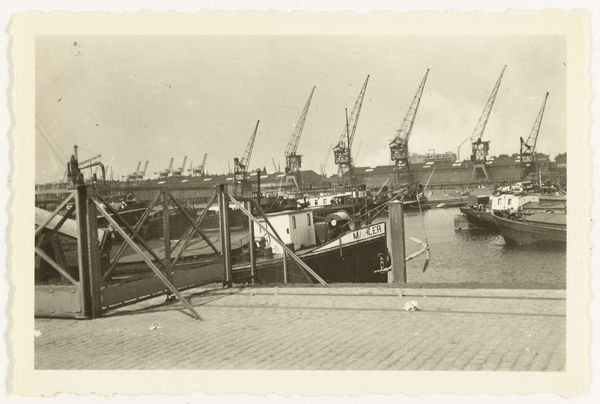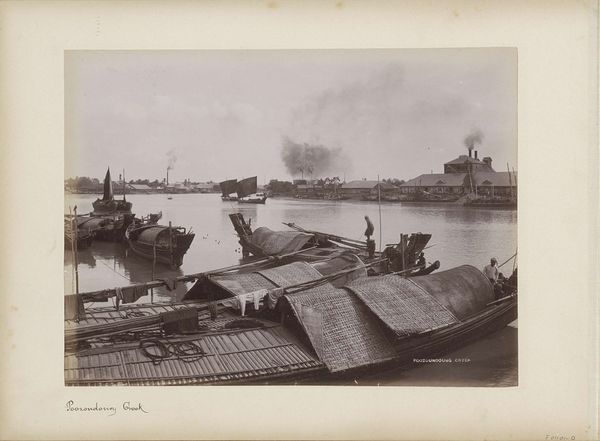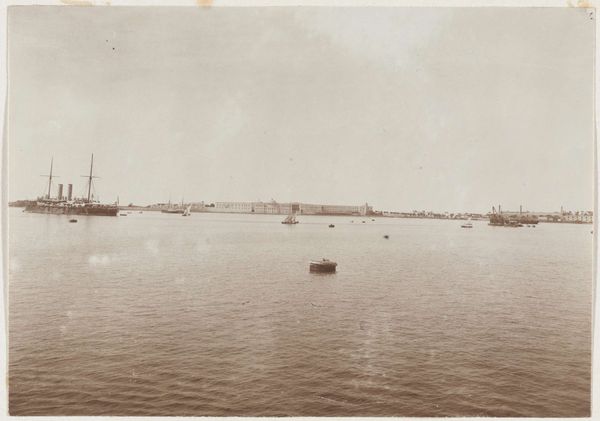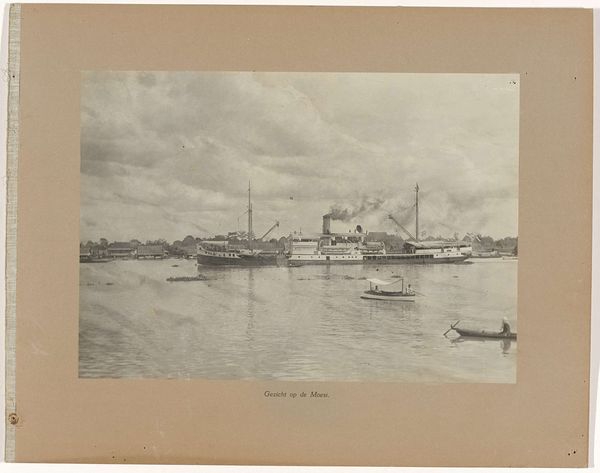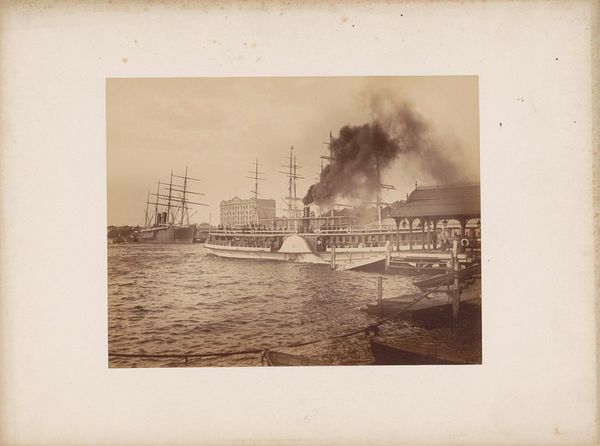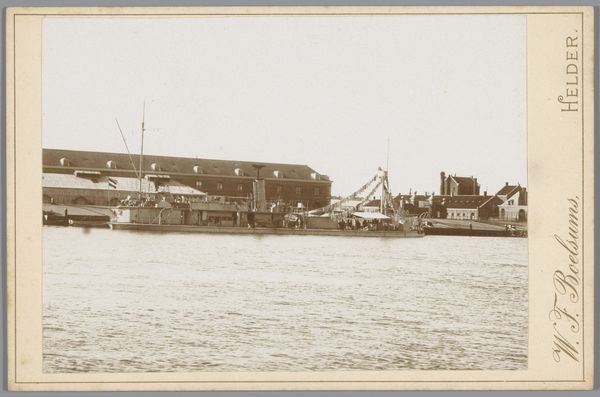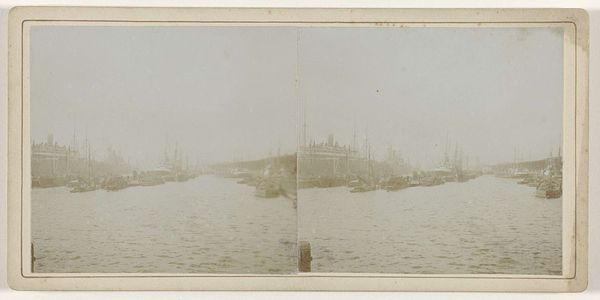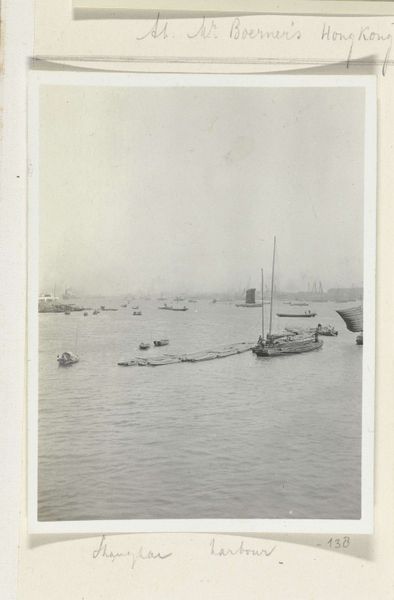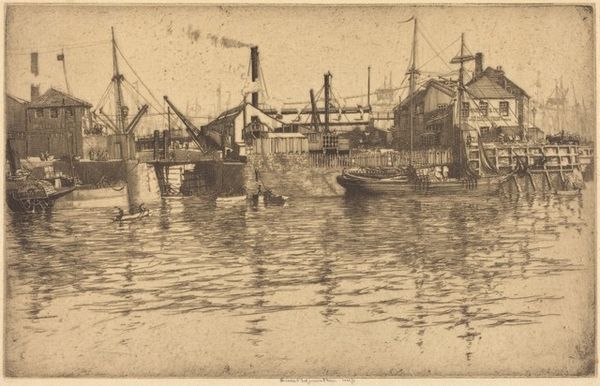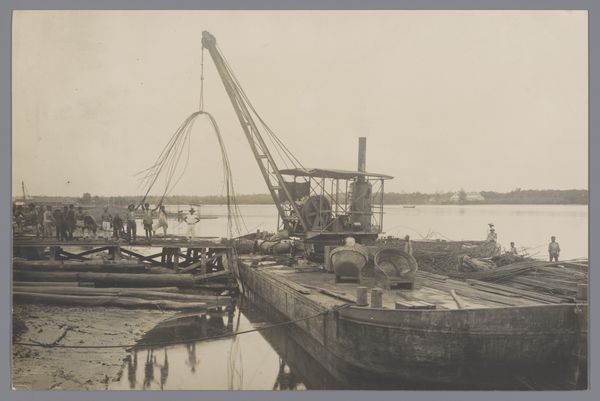
photography, gelatin-silver-print
#
landscape
#
outdoor photograph
#
outdoor photo
#
archive photography
#
photography
#
historical photography
#
gelatin-silver-print
#
cityscape
#
realism
Dimensions: height 6 cm, width 9 cm
Copyright: Rijks Museum: Open Domain
Curator: The "Rotterdamse haven op 15 mei 1940," an evocative photograph, captures the cityscape after the bombing, holding a place in the Rijksmuseum's collection. Editor: It has an eerie stillness, doesn't it? The muted tones and smoky haze feel almost apocalyptic. Curator: Absolutely. The cranes dominate the skyline, like skeletal remains, and for me, these stark shapes trigger images of loss and forced industrial progress. Editor: For me, it's the gelatin-silver print itself that is telling. This wasn't some mass-produced image. It feels meticulously crafted, almost as a conscious act of preservation in a time of immense destruction. The labor embedded in the medium amplifies the gravity of the depicted landscape, especially given the materials scarcity from those years. Curator: You highlight something interesting there, about craft and historical document, considering how photography at this time was seen. I read those cranes as symbols, almost monuments to labor made tragic—they once represented progress, but now oversee desolation. There’s a psychological weight in how they loom. Editor: Exactly, they are like silent witnesses but look at those barges: even with that damage all around, these people kept making and consuming! Those boats were crucial to maintaining supply lines and the semblance of normalcy during such a tumultuous period. Curator: True. I also wonder about the photographer’s intent. Is this supposed to be a grim reminder, or does it perhaps try to hint at a possibility for rebuilding through what it shows, an almost photographic memento mori, yet less interested in religious iconography and more focused on national resilience. Editor: Perhaps both intentions coexist. The stark realism avoids glorification and rather confronts us with a brutal picture of destruction but hints at perseverance through continuous material necessity of basic provisions of water transportation of that time. Curator: Ultimately, this photograph speaks volumes about memory and rebuilding and destruction; it shows both a will to carry on, but marks a trauma. Editor: It underscores how even seemingly simple photographic records from periods of chaos can become incredibly rich documents reflecting the interplay between labor, material culture, and society’s capacity to adapt.
Comments
No comments
Be the first to comment and join the conversation on the ultimate creative platform.
